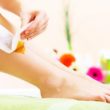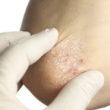Flip-flops are fashionably cute on the feet. However, being too close for comfort with your flip-flops can damage your feet. These colorful pairs are inappropriate for extensive walking for they do not offer arch support, heel cushioning or shock absorption. Thus, wearing them frequently can cause a variety of feet and leg related injuries.
Here is the list of common injuries related to over-wearing of flip-flops:
Toes
- Hammertoe: A foot deformity where the second, third or fourth toe is bent at the joint, which resembles to a hammer. Formation of hammertoe can encourage bunion formation or make existing bunion worse.
- Tendinitis: Overuse of muscle when wearing flip-flops can trigger tendinitis or an inflammation of the tendons that connects your muscles to the bones.
- Blisters: Rubbing your bare skin against plastic or rubber-made slip-ons leads to liquid-filled sore known as blisters. This causes pain between toes, which makes it harder to walk. They can be seen on the pads of your foot. It is due to the friction it does when walking with the flip-flops all-day.
Ankles
- Ankle sprain: This is the most common injury related to wearing of flip-flops. This condition is caused by lack of counter-support in a shoe, making your foot and ankle to roll over on its side, potentially tearing your ankle ligament.
- Unstable gait: Since flip-flop has no support in the arch or heel, it leads to unstable gait. This condition changes to your natural posture, leading to strains in your ankles, knees, hips and back.
Bones
- Stress fractures in the bones of the feet: This condition is developed from repetitive trauma from not wearing any shock absorption or cushioning. Standing or walking too long using these rubber slippers can cause tiny cracks to the bones.
Heels
- Plantar fasciitis: A condition caused by inflammation of plantar fascia, a thick band of tissue that runs from the heel to the ball of the foot. If you have this condition, you will experience sharp pain in the heel and arch regions.
- Over-pronation: This is developed from lack of arch support.
Exposure to bacteria, viral and fungal infections: Wearing flip-flops exposes your feet to bacteria such as Staphylococcus that can irritate the skin on your foot. You are also at risk of athlete’s foot, an itchy fungal infection, a highly contagious condition, which is spread by contact with something that’s contaminated. It can also be a breeding ground for plantar warts.
Apart from foot and leg related injuries, wearing flip-flops can affect your movements. A study shows that wearing flip-flops can slow you down since you take smaller steps than those who wear sneakers. It also makes you extra clumsy because those shorts strides you take whenever you wear that kind of footwear makes you at risk of tripping.
To prevent your feet from these injuries, investing in supportive yet comfortable footwear is essential. Here are some tips in picking the right pair for you.
- Choose a sandal with supportive yet lightweight outer sole that provides shock absorption.
- Look for a cradle around the heel to lower your risk of ankle sprains.
- Prefer cork soles than rubber soles. A slight wedge is better for some with higher arches.
- Look for sandals with a strap across the back. You can go for solid straps like Velcro strapping or pulley lock fit system to help hold your foot in place.
- Pick a flip-flop with thicker soles and a little bump in the middle to create arch support.
- Do the bend test. If your flip-flop bends easily right at the middle, do not buy it. A good pair of flip-flops should only bend at the ball of the foot, which is necessary for walking.
- Check the size. In finding the right pair, the toes or heels should not hang off the end of your footwear.
- Inspect the material. Foot experts recommend choosing high quality, soft leather footwear to prevent blisters and other irritation risk.
- Replace your slippers. If you notice signs of wear, toss that pair and buy a new one.












